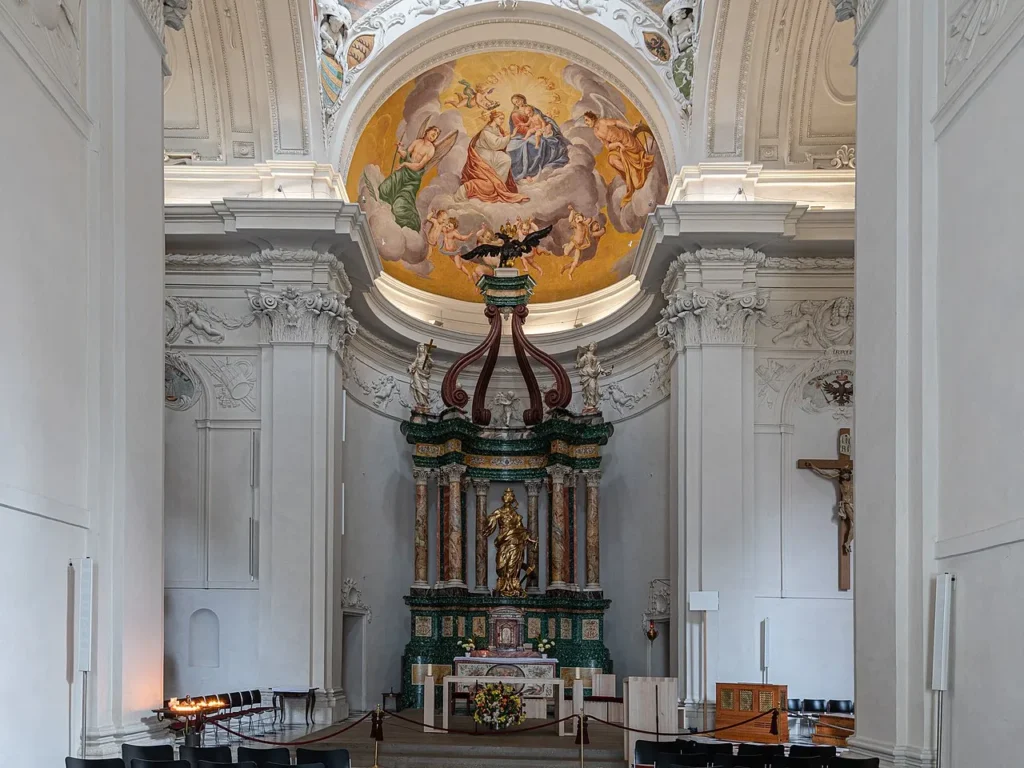Graz Cathedral, also known as the Cathedral of St. Giles, is a stunning example of Gothic architecture nestled in the heart of Graz, Austria. This historic cathedral is not only a place of worship but also a treasure trove of art and history, drawing visitors from around the world. Whether you’re an art enthusiast, a history buff, or simply someone who appreciates beautiful architecture, Graz Cathedral offers a rich experience that is both educational and inspiring.
Gothic Architecture and Design
Graz Cathedral is a prime example of Gothic architecture, a style that flourished in Europe during the late medieval period. The cathedral’s construction began in the mid-15th century under the reign of Emperor Frederick III. Its exterior is characterized by pointed arches, ribbed vaults, and flying buttresses, all hallmarks of the Gothic style. The intricate stone carvings and towering spires create a sense of grandeur and awe, making it a must-see for anyone interested in architectural history.
Inside, the cathedral continues to impress with its high vaulted ceilings and expansive nave. The use of light and space is particularly striking, with large stained glass windows that allow natural light to flood the interior, creating a serene and contemplative atmosphere. These windows are not only beautiful but also serve as a testament to the craftsmanship of the artisans who created them centuries ago.
Historic Frescoes and Artworks
One of the most remarkable features of Graz Cathedral is its collection of historic frescoes and artworks. The cathedral’s walls are adorned with frescoes that date back to the 15th century, depicting scenes from the life of Christ and various saints. These frescoes are not only significant for their religious content but also for their artistic value, showcasing the techniques and styles of the period.
Among the most famous frescoes is the “Landplagenbild,” or “Picture of the Plagues,” which illustrates the various calamities that befell the city of Graz, including the plague, locusts, and Turkish invasions. This particular fresco is a fascinating glimpse into the history of the region and the challenges faced by its inhabitants.
In addition to the frescoes, the cathedral houses several altarpieces and sculptures that are worth exploring. The high altar, with its intricate carvings and gilded details, is a masterpiece in its own right. Visitors can also admire the beautiful choir stalls and the impressive organ, which adds to the cathedral’s rich musical tradition.
Visiting Graz Cathedral
Graz Cathedral is conveniently located in the city center, making it easily accessible for visitors. The cathedral is open to the public, and admission is free, although donations are appreciated to help with the maintenance and preservation of this historic site. Guided tours are available for those who wish to learn more about the cathedral’s history and art, providing valuable insights into its significance and the stories behind its many features.
When planning your visit, it’s worth checking the cathedral’s schedule, as it hosts various religious services and events throughout the year. Attending a service can be a unique way to experience the cathedral’s spiritual ambiance and hear its magnificent organ in action.
For those interested in photography, the cathedral offers numerous opportunities to capture its stunning architecture and artworks. However, it’s important to be respectful of the space and any ongoing services or events.
In conclusion, Graz Cathedral is a remarkable destination that offers a blend of art, history, and spirituality. Its Gothic architecture and historic frescoes provide a window into the past, while its serene atmosphere invites reflection and appreciation. Whether you’re exploring Graz for the first time or returning to discover more, the cathedral is a place that promises to leave a lasting impression.
